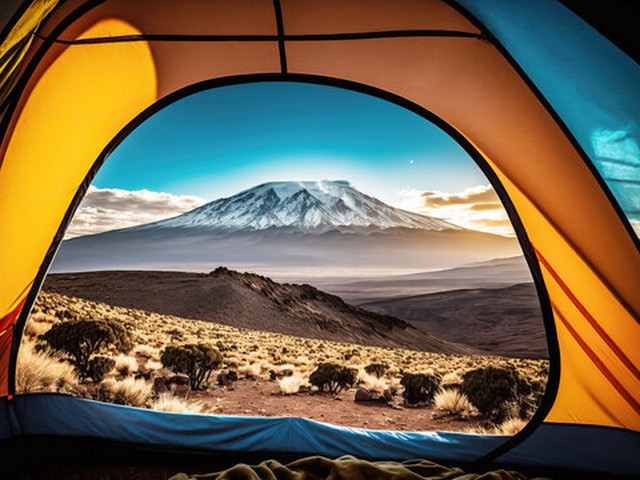Health and Fitness Preparation for Kilimanjaro Trekking: Your Ultimate Guide
Embark on a Journey of Transformation
Climbing Mount Kilimanjaro is not just a physical challenge; it’s a voyage into the heart of Africa’s majestic landscapes and an exploration into your own inner strengths. Here at Kilimanjaro Centre for Trekking and Ecotourism (KCTE), we understand that the journey to the summit of Kilimanjaro begins long before you set foot on the mountain. It starts with comprehensive health and fitness preparation that ensures you are ready to embrace and enjoy every moment of this life-changing adventure.
Why Prepare for Kilimanjaro Trekking?
Mount Kilimanjaro, standing proudly as Africa’s highest peak, invites adventurers from all around the globe to experience its awe-inspiring beauty. However, the journey to Uhuru Peak is demanding and requires not only determination but also physical readiness. Preparing your body and mind for this trek increases your chances of a successful summit, enhances your overall experience, and minimizes the risk of altitude sickness and other physical complications.
Step-by-Step Fitness Preparation
Start Early: The Key to Success
Initiate your fitness regimen at least six months prior to your trek. This gives your body ample time to adjust to new workout routines and build endurance.
Cardiovascular Training: Heart of the Matter
Focus on cardiovascular exercises such as running, swimming, or cycling. These activities improve your heart rate, increase lung capacity, and boost your stamina. Aim for at least 30-45 minutes of cardio, three to four times a week.
Strength Training: Building Your Foundation
Incorporate strength training into your routine to prepare your muscles for the rigorous demands of trekking. Focus on your legs, core, and back—key areas utilized during hiking. Exercises like squats, lunges, planks, and deadlifts are highly beneficial.
Hiking: Mimic the Mountain
There’s no better preparation than simulating the actual activity. Go on frequent hikes, preferably on uneven terrain. Gradually increase the distance and elevation gain of your hikes to mirror Kilimanjaro’s trekking conditions. Use the boots and backpack you intend to bring to Kilimanjaro to condition your feet and get used to the gear.
Altitude Training: Aim High
While it’s difficult to mimic the altitude levels of Kilimanjaro, you can increase your body’s adaptability through intermittent altitude training if accessible. Alternatively, focus on breathing exercises to enhance your lung capacity and efficiency.
Nutritional Guidelines for Optimal Performance
Balanced Diet: Fuel Up
A balanced diet is crucial for building strength and endurance. Incorporate plenty of proteins, carbohydrates, and healthy fats into your diet. Hydration is also key—drink plenty of water daily.
Supplements: Extra Support
Consider supplements such as iron, especially for women, as they can help prevent anemia at higher altitudes. Consult with a healthcare provider before starting any supplement regimen.
Mental Preparation: Climbing Beyond the Physical
Visualization: See Your Success
Regularly visualize yourself successfully reaching the summit. This mental rehearsal builds a positive mindset and reduces anxiety.
Stress Management: Stay Calm and Climb
Engage in stress-relieving practices such as yoga and meditation. These methods not only enhance your mental focus but also aid in physical recovery and preparation.
Gear and Equipment: Dress for Success
Appropriate Clothing: Layer Up
Dress in layers to adapt easily to the varying temperatures on Kilimanjaro. Invest in quality, breathable, and moisture-wicking fabrics.
Footwear: Foundation of Every Step
Choose well-fitting, durable, and broken-in hiking boots to prevent blisters and discomfort during the climb.
Technical Gear: Prepare to Perform
Essential items include a sturdy backpack, sleeping bag suitable for low temperatures, headlamp, and trekking poles. Quality gear enhances your safety and comfort on the mountain.
FAQs: Your Questions Answered
What is the best time of year to climb Kilimanjaro?
The best times are during the dry seasons: January to mid-March and June to October.
How long does it take to prepare for Kilimanjaro?
It’s ideal to start your preparation at least six months prior to your trek.
Can anyone climb Kilimanjaro?
While Kilimanjaro is accessible because it requires no technical climbing skills, physical fitness, and preparation are crucial for a successful summit.
Where can I find more information or book my climb?
Visit us at Kilimanjaro Centre for Trekking and Ecotourism (KCTE) for detailed guides, preparation resources, and to book your trek.
Concluding Your Preparatory Journey
Preparing for Kilimanjaro is as much about building physical endurance as it is about gearing up mentally and emotionally for the journey. At Kilimanjaro Centre for Trekking and Ecotourism (KCTE), we are committed to helping you make your climb a memorable and triumphant experience. Whether you’re a seasoned hiker or a first-time trekker, proper preparation is the key to enjoying and conquering the majestic Mount Kilimanjaro.
Are you ready to take the first step towards the rooftop of Africa? Book your Kilimanjaro climbing adventure with us today, and let us guide you to the summit with expertise and care. The mountain awaits, and so does a new chapter of your life!




